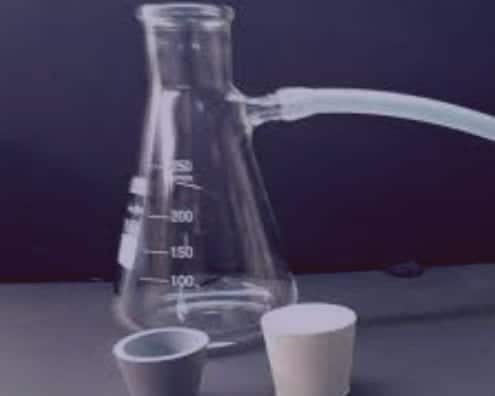Chemistry is a branch of science to which we must attribute the vast majority of discoveries and advances that human beings, as a race, have achieved. Thanks to this particular branch, it has been possible to discover and categorize all those elements that we use on a daily basis today. In addition to that, thanks to chemistry, advances have been made in the world of medicine, plastics and food.
However, although we can be aware of everything chemistry has done for us, very seldom do we stop and take time to remember, not only science itself, but those materials that allow us to perform those experiments that have served us so well.
The Kitasato flask is one of these laboratory materials that very little is said about, and in this post we will put on our white coat, enter the laboratory and discover what uses can be given to the Kitasato flask.
What is a Kitasato flask?
The Kitasato flask, or simply called kitasato, is a flask that is included among the glassware of the laboratory. It is, in its most basic explanation, an Erlenmeyer flask to which a small detachment tube or lateral nozzle has been added. Used in experiments with water, such as distillation, gas collection, vacuum filtration, among others.
History of the kitasato flask
The invention of this flask dates back more than a hundred years in the past, during which time the bacteriologist Shibasaburo Kitasato assisted together with many greats of the time in the discovery of infectious agents and their subsequent eradication. His findings are known in research on bubonic plague, who was the first to successfully find the infectious agent, in dysentery, diphtheria, among others.
By focusing on the branch of chemistry dedicated to medicine, he was able to successfully develop a flask that today bears his name, and which is used periodically in work with gases and solutions, since it allows easy distillation, in addition to performing vacuum leaks.
Main features
The Kitasato flask, frequently used in both chemical and medical laboratories, is still often confused today with the Erlenmeyer flask, mainly due to its shape.
This flask has a conical shape with an elongated neck, a thick mouth for the passage of substances, and a thin rim to avoid spillage; And it is definitely very similar to the Erlenmeyer flask. The glass from which it is made, however, must be so much thicker because this flask must be able to withstand high pressures.
Its most identifying characteristic is the small tube that protrudes from one of its sides, in the narrowest part of the bottle. This tube fulfills interesting functions, because the gas that will separate from another compound will pass through it, in order to be able to study them separately.
Uses of this flask
As mentioned, the Kitasato flask is designed, or is particularly used, for water-related studies. However, Its considerable thickness makes it possible to evaluate other types of gases, as it supports different pressure levels. Its uses vary in the laboratory. Here are the most common:
Distillation
Distillation is the process by which it is sought to extract gas from a mixture that has become a gas after having previously been a gaseous or solid compound. Due to the reaction the compounds separate, and to work with the gas it must be distilled in order to leave the solid or liquid residue behind. Thanks to this method, a volatile element can be separated from those that are not, and it is carried out by separating the gas by evaporation and then its subsequent condensation.
Shift volumes
In this method, the volume of an impermeable object is studied in order to identify it by observing its behavior within a liquid. This method is excellent and frequently used in the study of the volume of irregular solids.
Since it can be said that an object will have a volume equal to the space it occupies, by displacing the volume of the liquid we can, with a simple mathematical calculation, determine the volume of said object.
Vacuum filtration
With this method, what is sought is to separate the mixtures that are made up of liquid elements as well as solids. What you are looking for is to filter these using a vacuum pump together with a Büchner funnel, to which a filter has to be placed. This funnel will be located on top of the Kitasato flask.
This method is used when you want to recover the solid substance of the compound, especially when the compound in question has a high viscosity, or when the solid elements are very small.
Advantages in using this flask
There are several advantages involved in using this particular flask. Here we will list a few.
- The most obvious advantage is that, thanks to its detachment tube, it allows us to isolate gaseous substances that were previously mixed with solid or liquid compounds.
- It also gives us a good advantage when handling liquids, since the narrow edge of its upper opening allows the substance to be kept as pure as possible when working with it. In this way, the evaporation of the compound or its contamination with external agents is avoided.
- Inside this flask the compounds can be shaken much more efficiently than even inside a beaker, which has a wider structure that, despite being useful in many cases, also favors spillage.
- This flask also allows us a good handling of the substance with which we are working, since unlike some laboratory flasks, it allows us to leave the substance at rest without running the risk of spilling the compound

